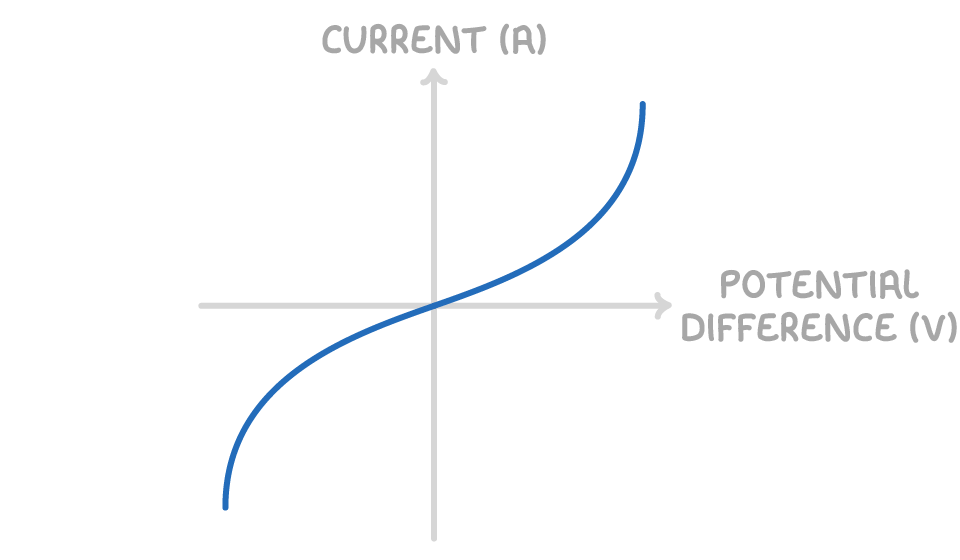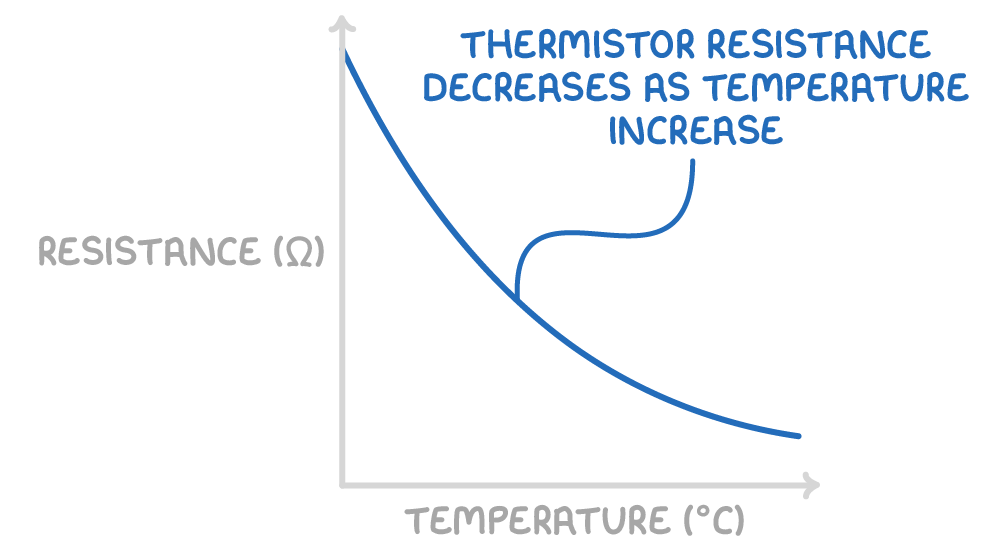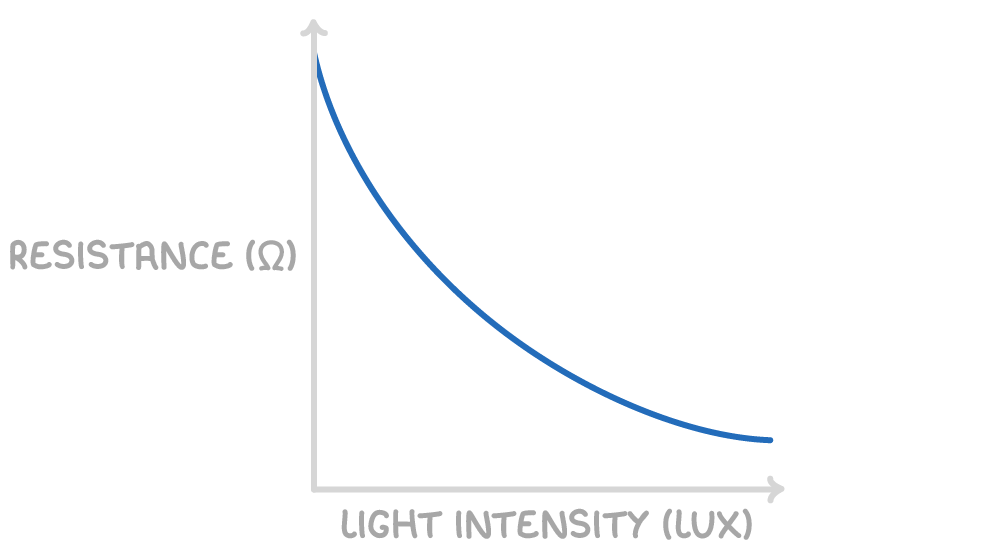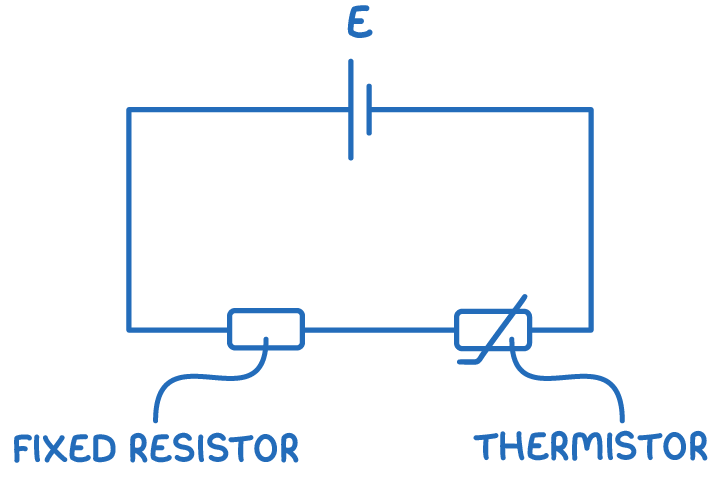Variable Components
This lesson covers:
- The variation of resistance with temperature for thermistors
- The variation of resistance with light intensity for LDRs
- How sensing circuits can be created using variable resistance components
Semiconductors
Semiconductors, having greater resistivity than metals, become more conductive when energy is added, as this process releases more charge carriers, thereby reducing resistance. This characteristic renders them ideal for sensors detecting variations in temperature, light, and other factors.
Key examples include:
- Thermistors
- LDRs (Light Dependent Resistors)
- Diodes
Thermistors

Thermistors are special resistors with temperature-dependent resistance. In NTC (Negative Temperature Coefficient) thermistors, resistance decreases as temperature increases.
Key points:
- Heating a thermistor provides energy to release additional charge carriers.
- An increase in charge carriers leads to reduced resistance.
- The I-V graph for a thermistor curves upwards, indicating decreasing resistance with increased current due to temperature rise.

It is often useful to think about how the resistance of the thermistor varies with temperature:

Light dependent resistors

An LDR, or Light Dependent Resistor, exhibits resistance that inversely correlates with light intensity.

When light intensity increases:
- More charge carriers are released.
- This results in lower resistance.
Sensing circuits

A temperature sensor can be formed by placing the thermistor in series with a fixed resistor.
How it works:
- As the temperature of the thermistor increases, its resistance decreases.
- This reduces the overall circuit resistance and so the circuit current increases.
- This causes the voltage across the fixed resistor to increase and the voltage across the thermistor to decrease.
Similar sensing circuits can be created using LDRs to monitor light intensity.